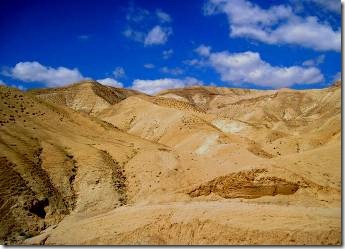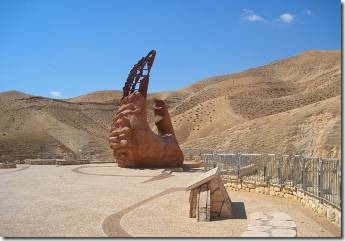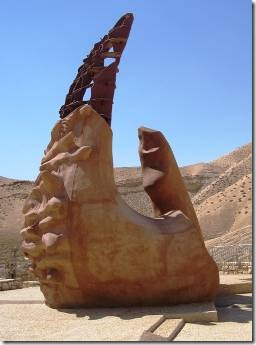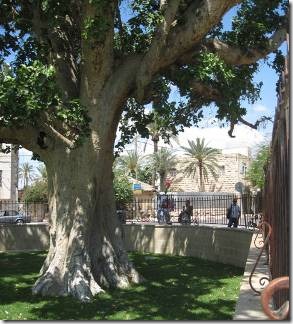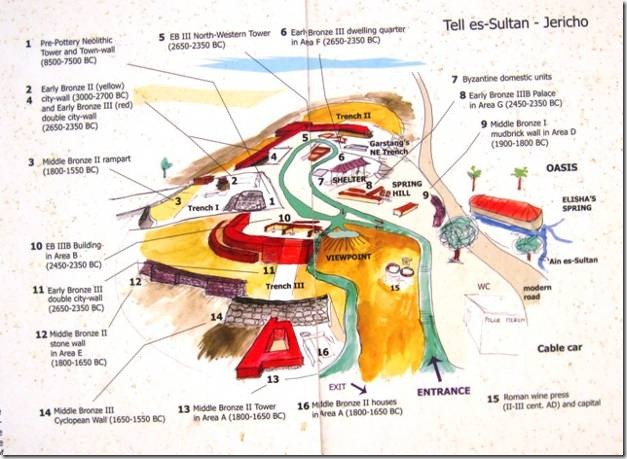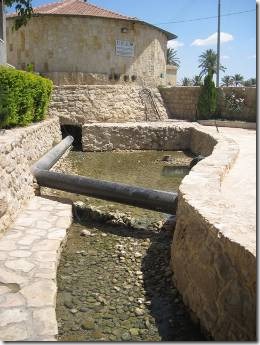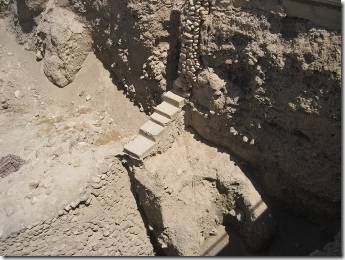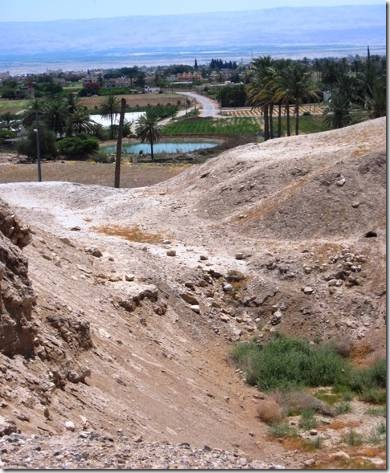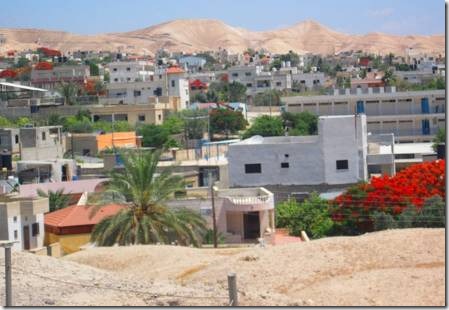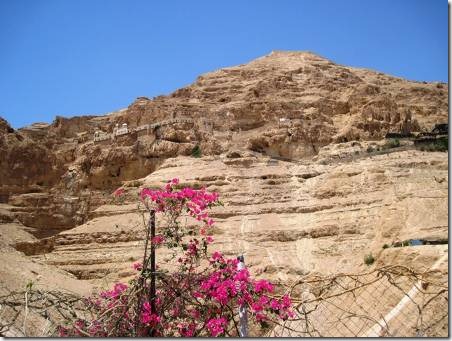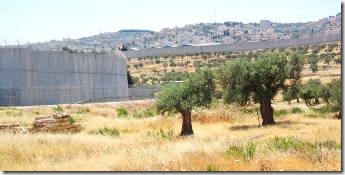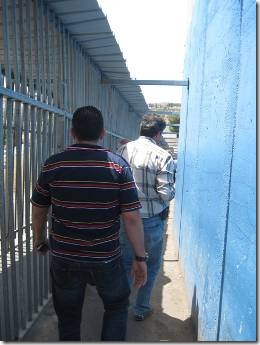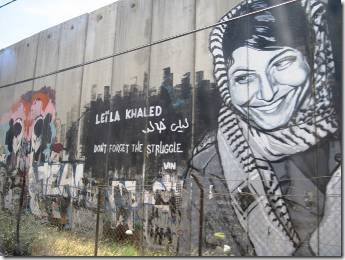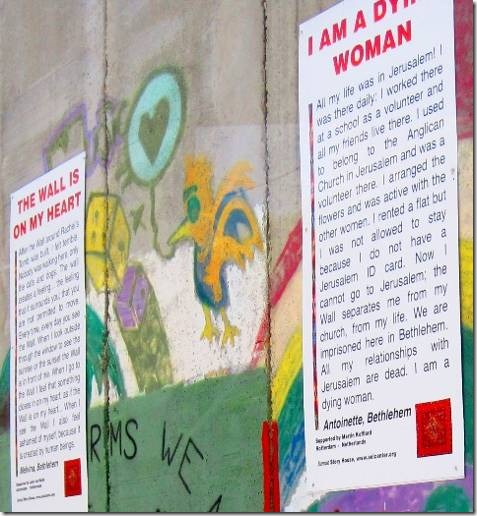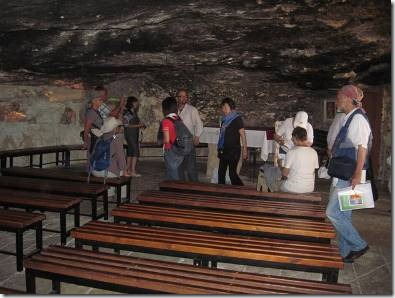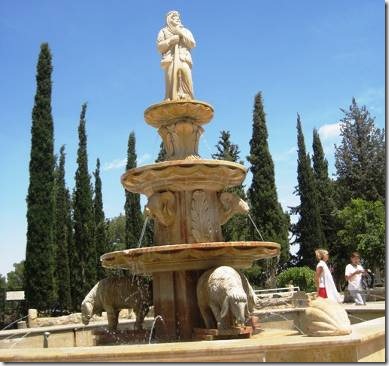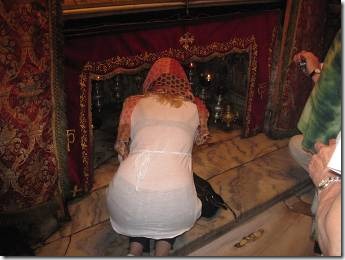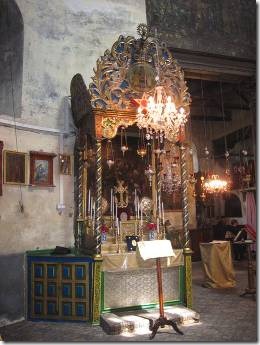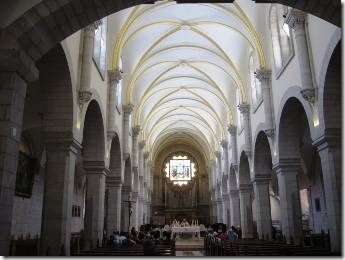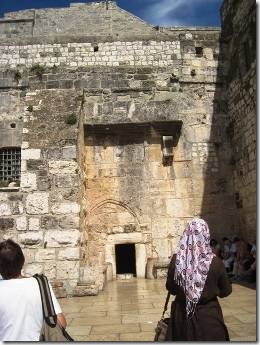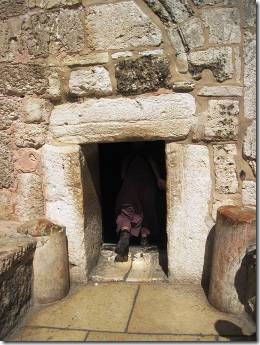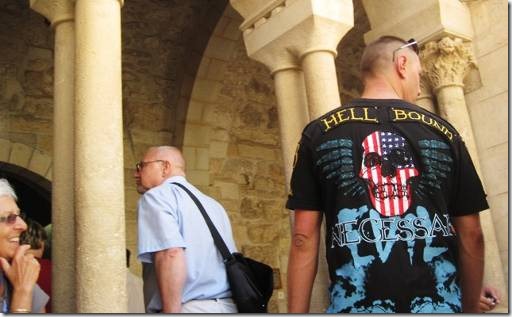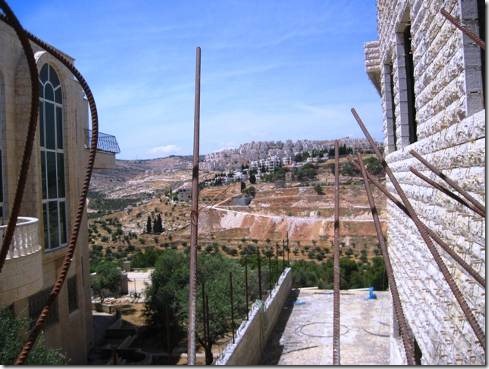Shalom,
We have been in Israel almost a month and my expertise on the Israeli-Palestinian question is less than zero. I say less than zero because I really know nothing but have a bias towards Israel. Add to that the fact that I was brought up in America by parents who taught me to treat everyone equally no matter who they were. People weren’t groups, they were Individuals. It’s hard to unlearn that and I hope I never do. I certainly don’t want to be stereotyped so why would I want to do that to anyone? Being a professional librarian meant treating everyone who came into the library equally. At times I failed, something I’m definitely not proud of. I want to believe most people will do the right thing if nothing gets in their way. Believing anything else would make the world a more scary place than it already is. And we’d probably not be out here traveling around in it.
Ru
Palestinian Jericho and Bethlehem
Jericho http://www.bbc.co.uk/religion/religions/judaism/history/joshua.shtml
Not far from Jerusalem we had this reminder that Israel is a desert country.
Our guide told us that the actual term seal level and its measurement comes from the Mediterranean Sea. We stopped at a sculpture of a hand making the symbol for 0 because that’s where we were…sea level heading down to Jericho which is below sea level and maybe the lowest city on earth a 846 feet below sea level.
Awakening Sea Level 2010 by Or-nah Ran http://or-nah.com/about.html
We stopped to look at this sculpture on our way to Jericho. When I realized the artist was a woman I had to do more research.
“Or-nah is not traveling in a train that stops in stations on its way to any final destination. She travels in different trains to various places. Sometimes the train leads her, sometimes she drives the train. Sometimes the train stops in an undisturbed landscape, and Or-nah says: “Here, I am not needed”. Sometimes she stops in a place and she feels: "I will not be requested here”; and there are the blessed locations where she gets off the train and says: "This is my call." http://or-nah.com/about.html
A hand making the symbol for 0 (Zero) because it is located at Sea Level: no feet about and no feet below.
http://or-nah.com/environmental_sculpturing.html?pid=29
Awakening
http://or-nah.com/info.html?pid=29
The sculpture was born out of pride and timidity
Pride for the ability of the organization to pave a road through the desert, to change a rock to flying dust to direct water to wherever road they would walk.
Timidity for feel humble due to the insignificance of humans in the infinite world; feeling apologetic and willing to compensate for the loss of the desert’s quality
Its beginning was in a different place and in a different subject – huge fossils that are discovered during quarrying, whether lying in their demise, or moving to a different place.Unfortunately the current place was chosen, at sea height, on a small leveled platform that was created during paving/ the fossils are awakened to life with a woman’s yoga stretching movement.
The sculpture was built with a complicated process. The skeleton was constructed with steel sheets according to a ceramic model that was scanned with a three dimensional scanner, and was brought to the sight in four large parts, where they were joined together and covered in a peel of screens and plaster unto which was poured cement. While working on her sculpture Or-nah decided to leave its top portion as an exposed, steel skeleton. This part was coated with colored Polioria.
The texture of the sculpture’s face relates to the surrounding rocks and view line and this strengthens the feeling of awakening.
As in Or-nah’s other works, the motion is implanted in the sculpture, in its soul, and opposing it is the outward motion into space and upwards.
Sea Level, Road no. 1 towards East Location: 2,440 km from Mitzpeh Jericho junction.
Materials: Steel skeleton reinforced with cement coated with a layer of colored plaster, top coating polioriah.
Dimensions: Height 8.5 m.
Ordered by the Israel national roads company
Carrier out: Y.S. Shem Tov
Centuries old Sycamore Tree mentioned in the New Testament story about Jesus and Zacchaeus
http://www.israel-a-history-of.com/jericho-israel.html says a great deal of the same things our guide said about the age of Jericho.
The unimpressive spring that gave birth to Jericho’s historic settlement 10,000 years ago and the remains of the “walls of Jericho.”
I’m not sure what’s in the building behind the spring because, though it was to be part of our tour, the man with the key couldn’t be found so that was that. In the Bible it is called Elisha’s Spring. Elisha was the successor of Elijah for whom we leave a cup of wine at Passover. Our tour guide explained to us about the walls to prove how old Jericho is, and because the walls are sort of the main attraction. But he never mentioned Joshua or anything that had to do with the Israelites other than that they were preventing the development of modern Jericho. To get to Jericho we had to have an Arab/Israeli bus driver and then the Daily Tours Company had to hire a Palestinian tour guide for our tour. A lot of politics got in the way of actually learning much about Jericho. There was a tour group from Brigham Young University seemingly getting a great deal our of their visit, but they had their own teacher with them.
Jericho was an oasis in the desert.
The modern but underdeveloped Jericho.
We left the dig and went to the “souvenir shop” where no one bought anything so our guide gathered us all up and we went off to "look up at" the Greek Monastery of the Temptations up on the hill which was where the New Testament says that Jesus had to deal with the Devil’s temptations. It would have been nice to visit the monastery for its view, but that wasn’t part of the tour so we just looked up at the Monastery and the Israeli Military Station across the hill to the left.
Off to Bethlehem.
The wall around Bethlehem and the walkway on the Palestinian side.
We drove back through Jerusalem and off to Bethlehem. We’d had to go through a guard crossing (in the bus) to get into Jericho. To get into Bethlehem we had to get off the bus and walk through the security gate out of Israel and through the security gate into Bethlehem. We didn’t have to show our passports but we did have to get a new driver and a new guide. Our guide had done his undergraduate and master’s work at Ohio State! But he mentioned nothing about David or Ruth whose stories connect with Bethlehem.
Just inside Bethlehem you are greeted with painted walls……..
But Palestinian art or issues weren’t part of the tour so our guide said nothing and we drove straight to Manger Square. It was 1:30 and we were promised lunch at 1:30 but that wasn’t going to happen until we visited Shepherds Field. So we just had to be wait and be hungry.
Shepherds Field is where the birth of Jesus was said to be revealed to the shepherds, though apparently there are different churches of different religions that claim the title of Shepherds Fields in different locations. We visited the Catholic site.
"On the north ridge of Beit Sahur, about 400 metres north of the Orthodox site, a Catholic site is located in an area called Siyar el-Ghanam (Place for Keeping Sheep).
A tent-shaped Chapel of the Angels, designed by Italian architect Antonio Barluzzi, adjoins the remains of a 4th-century church and a later agricultural monastery. Paintings in the chapel depict the angel’s announcement to the shepherds, the shepherds paying homage to Jesus and the shepherds celebrating the birth of the Messiah.
Beyond the chapel is a cave for small group worship. The area is administered by the Franciscans."
http://www.seetheholyland.net/shepherds%E2%80%99-field/
Not Saint Francis as I thought..our guide pointed to the keffiyeh on the statue’s head indicating he was a shepherd, not Saint Francis. I had just looked at the animals and not thought about the story of the shepherds. I was thinking about my friend Sarah who has a Saint Francis Help Dog named Drake, so I decided this was Saint Francis. Logical to me.
Our lunch stop finally, and we were starving by almost 2 pm, served really good food. It was a much larger meal than I would have chosen, but we had no choice. It was pretty much eat where the tour stopped or don’t eat. The roasted eggplant and potatoes were wonderful. After lunch we went off for our odd tour of the Church of the Nativity.
Church of the Nativity
This was supposed to be the location of the manger where Jesus was born. There is a lovely star on the floor but it was impossible to photograph it because of the line of people wanting to get near. It was obviously more important to them than to me so I didn’t get that close. Plus we had to rush for a very odd reason. Our guide had to sneak us into the church because as a group larger than 6, we had to wait in the very long “tour group line.” So we had to divide up and some wait and some go and some of our group didn’t speak English and no one knew exactly what we were supposed to be doing at any given time. Pick a different tour group if you go, or go on your own.
The chapel on the left is either Greek Orthodox or Armenian and on the right, the Franciscan Order of the Catholic Church in the Church of the Nativity.
http://www.smithsonianmag.com/travel/Endangered-Cultural-Treasures-Church-of-the-Nativity-Bethlehem.html is a good Smithsonian article about the church and how different beliefs get in the way of accomplishing the common goal of restoration. So here is where I say, "if religion could be personal rather than political the world would be more peaceful or at least would have one less thing to fight over."
The church’s famous entrance, the four-foot-high "Door of Humility," was built not to make pilgrims bow but rather to repel looters on horse- and camel-back after the Crusades.
Charmaine getting a chuckle from the appearance of this shirt in this place.
Bethlehem on one hill and an Israeli settlement on the other.
I actually thought that Bethlehem would be an interesting place to spend at least a day and maybe stay overnight. It has things to see and a market. It seemed alive; and there were certainly lots of tourists. The one meal that we ate was quite good.
So that was our tour day of Jericho and Bethlehem. Our guide told us that Jews translated Bethlehem as House of Bread and Arabs translated it as House of Meat. Lehem sounds like the Hebrew word for bread. Lahm is the Arabic word for red meat.

